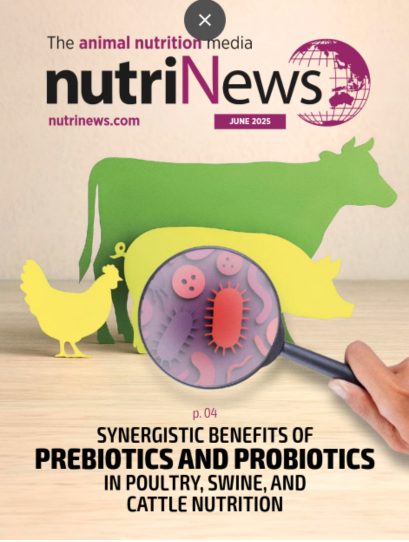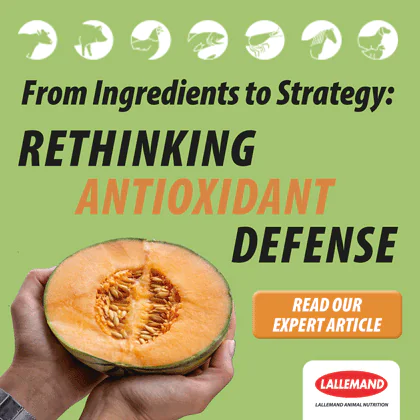Environmental impact of pig farming:
Yet another example that we can only improve what we measure!

Pig farming in the context of global food demands
Meeting the growing global demand for food is undoubtedly one of the greatest challenges we will face in the coming decades. The productive sector (including agriculture and livestock) will need to feed an increasingly larger population without compromising the ability of future generations to meet their own needs.
In other words, the development of sustainable agri-food systems is a mandatory requirement. Pig farming already demonstrates high levels of performance and plays a crucial social role in ensuring food security for the planet.
However, there is still room for improvement when it comes to environmental sustainability. In this regard the old saying “we can only improve what we measure”, becomes truly relevant.
How to assess environmental impact?
The environmental impacts of pig farming have generally been analyzed in isolation (e.g., focusing on the animal) or limited to direct associations (e.g., emissions in the animal’s environment).[register]
These indicators are useful when the chain’s pollutant emissions have a local environmental effect and are often used to assess the emission of substances such as:
- Nitrates
- Ammonia
- Phosphates
However, pig farming is a complex chain, and therefore, environmental impacts can be better understood through multidisciplinary approaches that consider its entire production cycle.
Global assessment techniques generate more representative environmental indicators as they consider not only the direct impacts of the activity but also the emissions associated with the raw materials used throughout the production chain.
Every product has some level of environmental impact, whether it is associated with its production process, the raw materials it consumes, or its use and final disposal.
In the case of pig farming, a finished animal ready for slaughter is obtained after a long chain of events and phases (piglet production, cultivation, harvesting, and transportation of grains, etc.). At each stage of this production chain, energy is consumed, and pollutants are generated.
Life Cycle Assessment (LCA) is a widely recognized tool in the context of global environmental impact analyses. The technique allows the evaluation a specific system (service or product) by systematically analyzing the flows and environmental impacts associated with its entire life cycle (“from cradle to grave” or from the extraction of raw materials to their final disposal), assuming that every source or unit of energy consumed in the system has an environmental impact.
During the analysis, all significant emissions or energy uses throughout the life cycle are aggregated and expressed relative to the chosen functional unit (e.g., 1 ton of feed or 1 ton of pork; Figure 1).
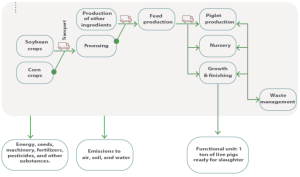
Figure 1. Example of stages considered in a life cycle analysis study.
Life cycle assessment can be used to identify points in the chain that can be improved in terms of environmental sustainability and, in a preventive approach, as decision-making and strategic planning facilitators to reduce the impact generated in the production of goods of interest to society, such as meat production.
LCA applied to pig farming
A systematic literature review was recently conducted (Andretta et al., 2021; DOI: 10.3389/fvets.2021.750733), which identified 55 studies applying life cycle assessment to pig farming (Figure 2). In addition to the potential for climate change, LCA studies also considered other categories of environmental impact, such as:
- Eutrophication
- Acidification
- Energy use
- Land use
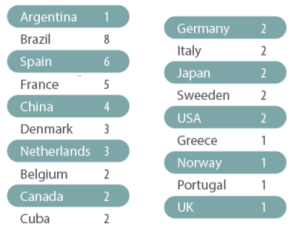
Figure 2. Countries whose pig production systems were studied in life cycle analysis analyses.
Changes in feeding practices (diet composition or feeding programs) were studied in 25% of the articles. This is because the relative contribution of feed production (which includes the life cycle, manufacturing, and transportation of each ingredient) is quite high, accounting for up to 76% of the total potential climate change impact associated with pork production (Figure 3).
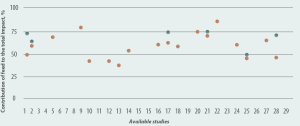
Figure 3. Relative impact of feeding on the total climate change potential associated with pig production in various scientific articles.
In a context where most of the ingredients used for feed production have global markets, it is important to highlight that the impacts associated with a particular product are practically shared among several countries involved in international trade.
The most common example of this intercontinental sharing referred to in the aforementioned studies is the use of imported soybeans from South America, mainly coming from Brazil (49% of the studies). Under such scenario, it is possible to infer that part of the impacts associated with swine production in China or Europe also occur in Brazil. Considering that the South American country is one of the major producers of this main ingredient for pig diets.
Feeding practices as mitigation tools
The environmental sustainability of pig farming is closely linked to the optimization of feeding practices.
Therefore, several practices can be proposed to minimize this impact. Some of these practices are associated with the transport of ingredients and feeds. The distance between the production site of feed ingredients and their place of use can be considered an important argument in favor of choosing (or replacing) ingredients.
This discussion is common when it comes to economic impacts but is also extremely valid for environmental issues. Reducing the distance between producers and consumers means less need for transportation and, consequently, lower costs and emissions.
However, the use of local ingredients should not impair feed conversion. Otherwise, the advantages can be lost due to increased demand for feed to reach the same final weight.
Feed composition in terms of the ingredients, is also a way to reduce nutrient excretion and, consequently, the composition of waste. Therefore, the choice of ingredients needs to be made with caution, focusing not only on their origin but also on the nutritional quality of the product. Strategies that reduce nutrient excretion are crucial for mitigating environmental impact.
Several examples could be cited here, such as the use of:
- Exogenous enzymes
- Synthetic amino acids that partially replace traditional protein ingredients
- Diets with lower levels of crude protein and minerals
Modifying feed formulation methods and adopting precision feeding techniques are also very important tools in this context. Using a rather simple description, it can be stated that precision feeding consists of providing the right amount of feed with the right composition to meet the requirements of each animal in the herd.
Each animal has unique growth and consumption characteristics, therefore, it is also unique in its nutritional requirements. Moreover, these requirements change dynamically and (in a comprehensive concept of precision nutrition) should be known and met in “real-time.”
The advancement of technology and scientific knowledge in the field already allows for the adjustment of nutrient supply tailored to meet the animals’ nutritional requirements in real-time. Although these production models are still limited to research centers, the most recent results are quite promising.
In practice, increasing the number of phases can already be considered a step towards precision feeding, as well as raising animals in more homogeneous groups. In the Brazilian scenario, a study conducted by Andretta et al. (2018; DOI: 10.1017/S1751731117003159) showed that replacing conventional feeding (where the same feed is provided for several days) with daily feeding (where nutrient supply in diets is adjusted daily) can reduce the potential impact of eutrophication by 4% and acidification by 3%.
Mitigation was even greater (up to 6% for climate change and 5% for eutrophication and acidification) when the nutrition program was adjusted for each animal (daily and individually). In both scenarios, the main advantage of precision feeding programs lies in the greater efficiency in nutrient utilization. In other words, the same amount of product (e.g., pig) is produced using fewer resources (e.g., lysine).
Despite all the variability found in the studies available in the literature, the contribution of feed to the total impact of animal production is significant and deserves even more attention within environmental impact mitigation strategies.
 Pig farming has already evolved significantly, and several practices mentioned in this text are already being used by nutritionists and producers. Identifying these environmental advantages (including those already present in production systems) can be an alternative to further valorize the productive chain and its efforts towards sustainability.
Pig farming has already evolved significantly, and several practices mentioned in this text are already being used by nutritionists and producers. Identifying these environmental advantages (including those already present in production systems) can be an alternative to further valorize the productive chain and its efforts towards sustainability.
References available upon request
[/register]
Source: This article was originally published as a content in portuguese in nutriNews Brasil


